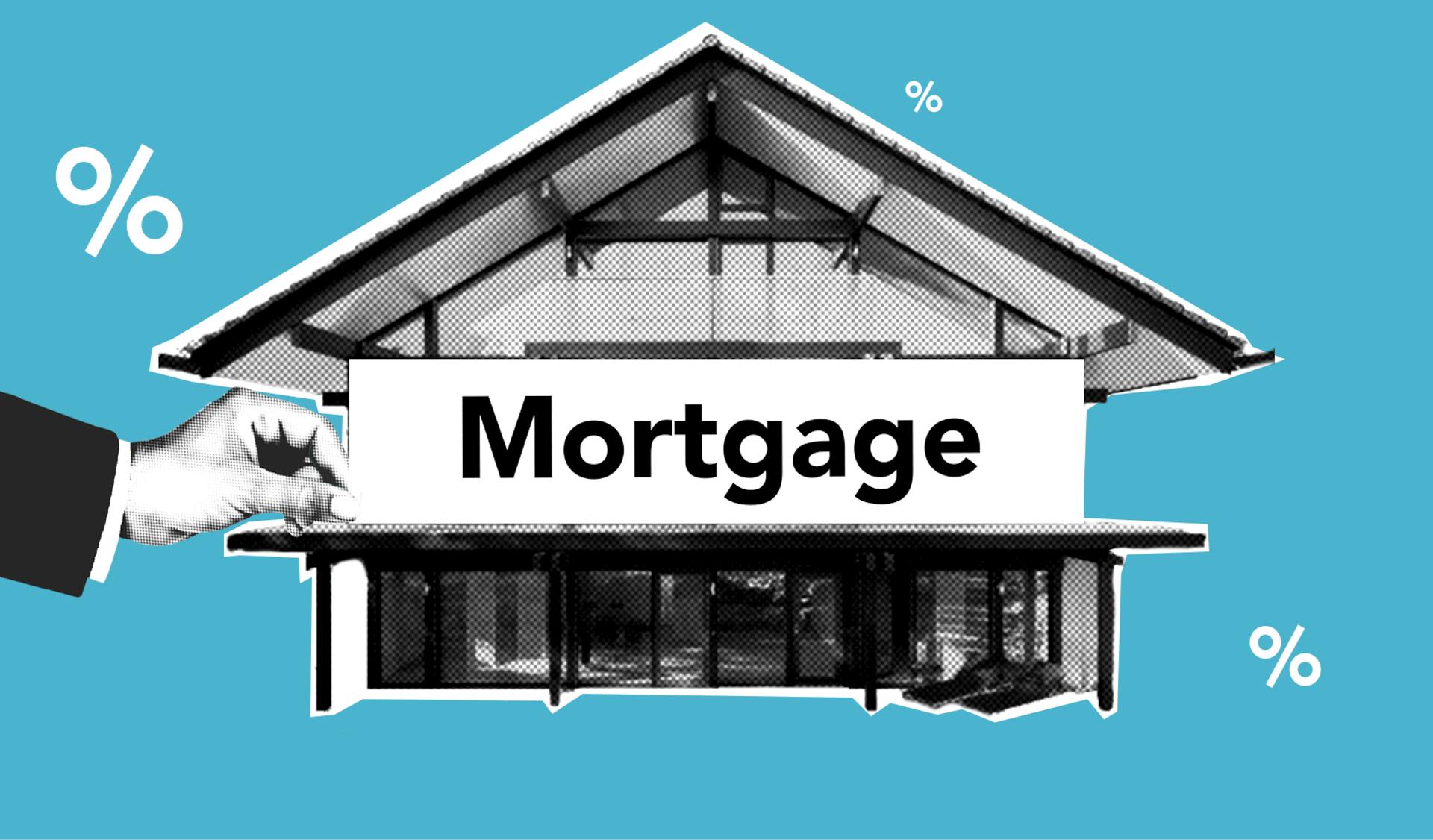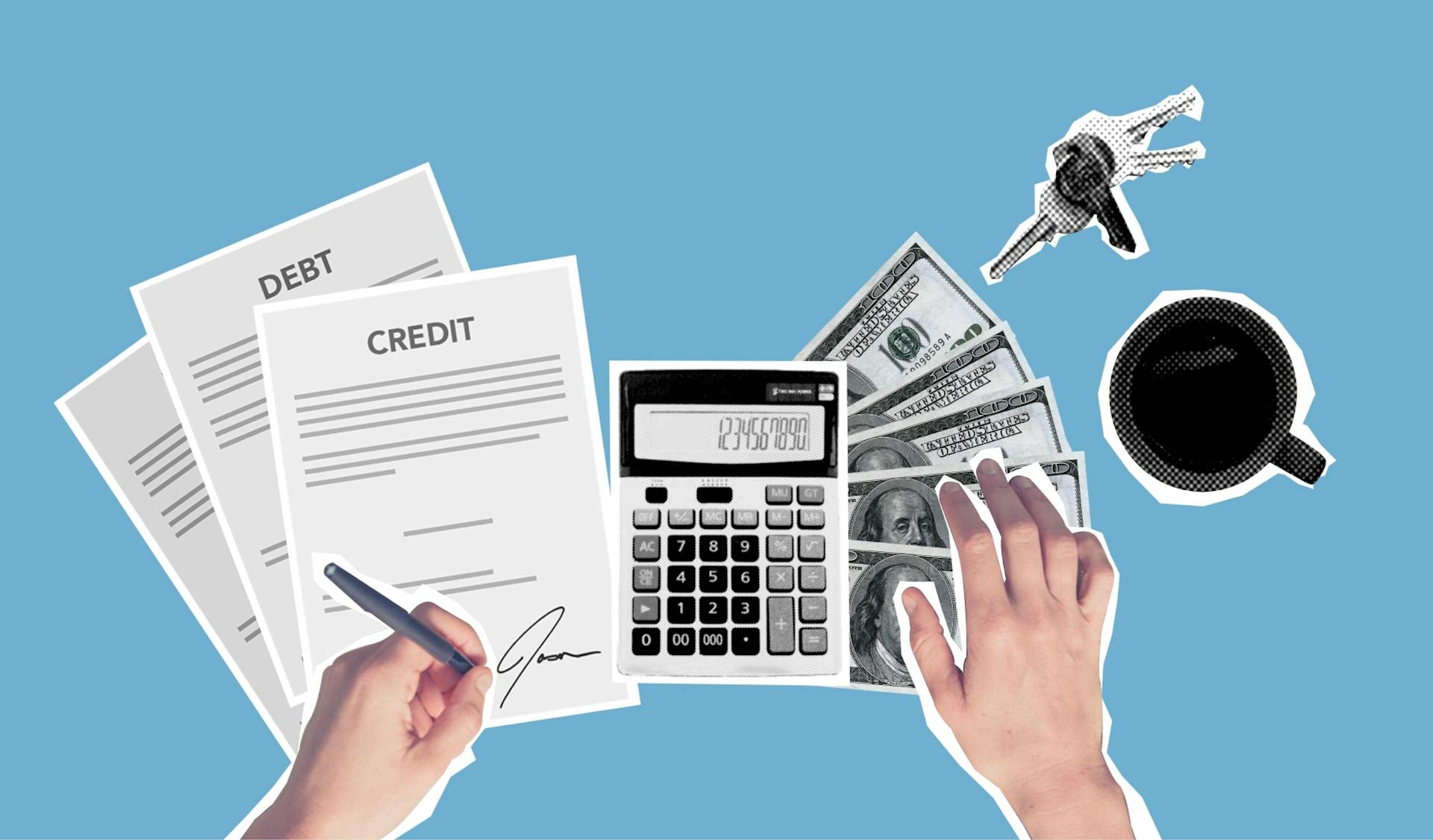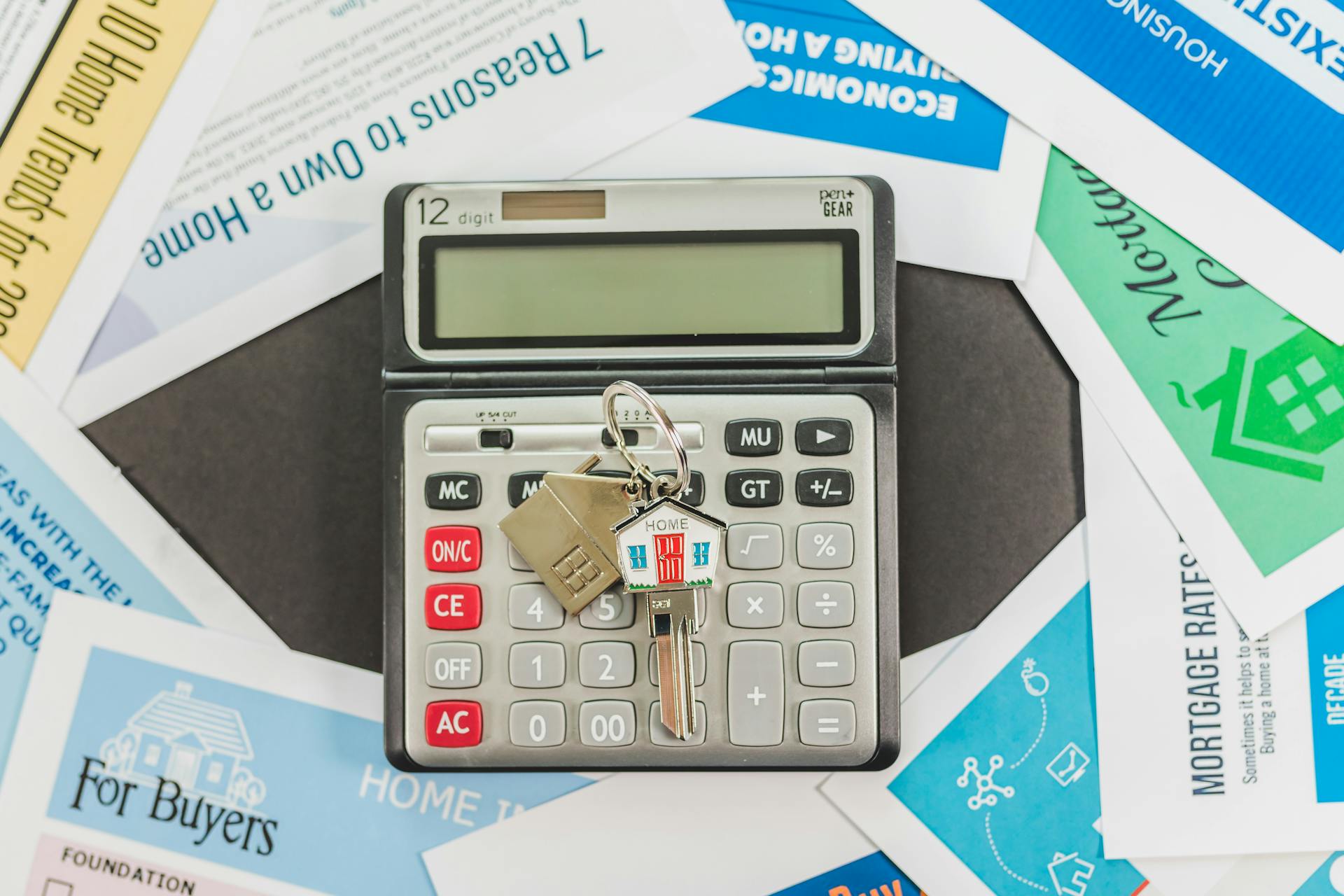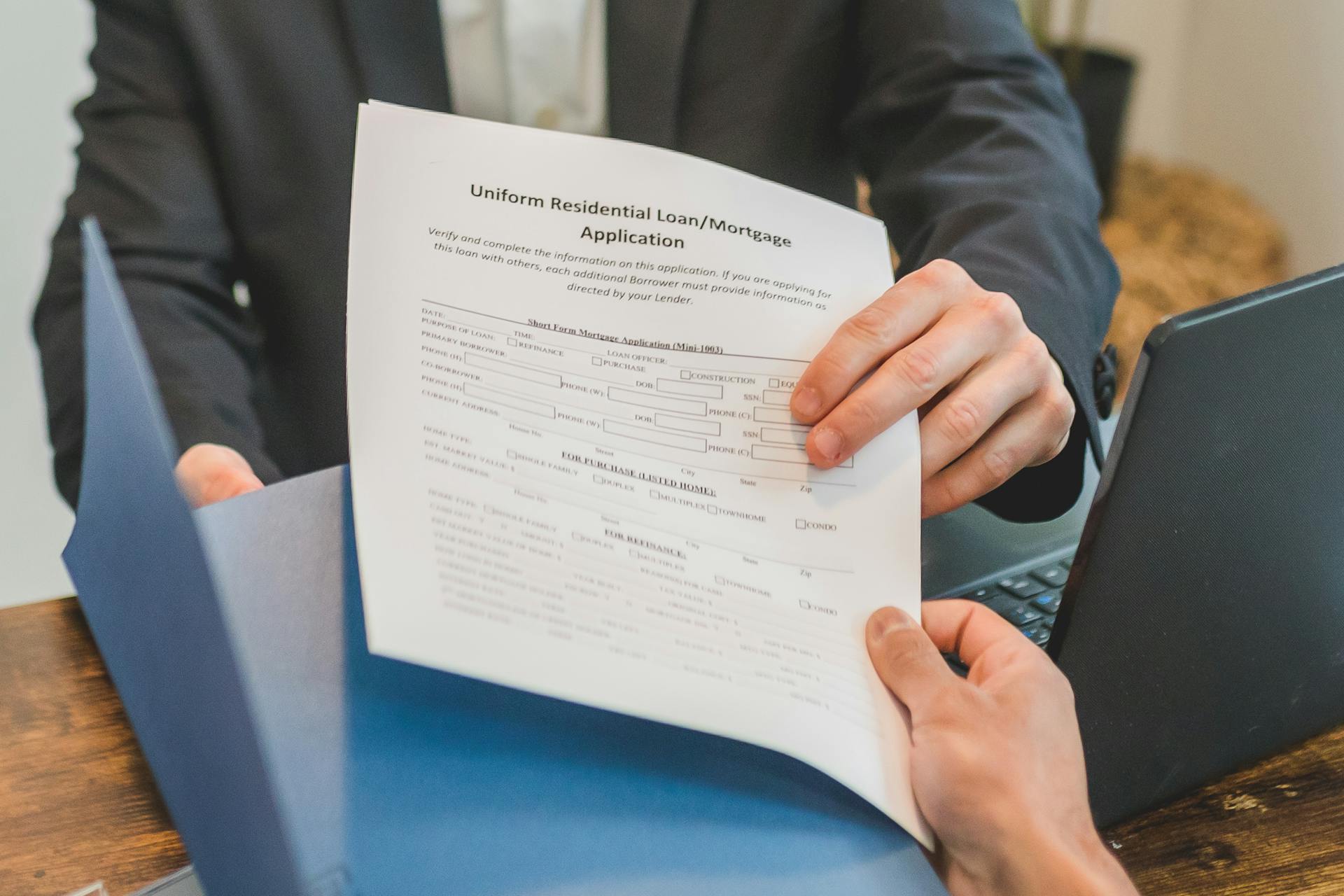
A promissory note with a balloon payment is a type of loan agreement where the borrower makes regular payments, but a large lump sum is due at the end of the loan term.
This type of note is often used for loans with a short term, typically 5-7 years, and a larger loan amount.
The balloon payment is usually 20-30% of the total loan amount and is due at the end of the loan term.
This can be a challenge for borrowers, as they may struggle to come up with the large payment required.
A fresh viewpoint: Closed End Equity Loan
What is a Promissory Note?
A promissory note is a written agreement between two parties, typically a lender and a borrower, that outlines the terms of a loan. It's a binding contract that specifies the amount borrowed, the interest rate, and the repayment schedule.
A promissory note should include the amount of the loan and the amount of the periodic payment that should be made. It's essential to have this information in writing to avoid any misunderstandings.
The promissory note should also state that a balloon payment will be due at the end of the term, which is typically equal to the remaining principal and interest due. This means the borrower will need to pay a large sum at the end of the loan period.
Related reading: Will Lender Accept If a Friend Gift Money Conventional Loan
Benefits and Drawbacks
A promissory note with a balloon payment can be a great option for some borrowers, but it's essential to understand the benefits and drawbacks before making a decision.
The obvious advantage of balloon payments is the low initial payment requirement, which can be a big plus for borrowers who need to preserve future cash flow for other purposes.
A balloon note or loan often has a shorter underwriting process, which can result in lower administrative or transaction fees. This can be a significant advantage for borrowers who need to secure a loan quickly.
For home flippers, a balloon payment structure can be strategically advantageous, allowing them to secure lower upfront monthly payments and preserve cash flow for other purposes.
However, balloon payments can be a big problem in a falling housing market, where homeowners may be unable to sell their homes for enough to cover the balloon payment.
Greater risk in foreclosure is a significant drawback of balloon payments, especially if borrowers are unable to meet their loan requirements.
Here's an interesting read: Cash Flow Loan
A balloon payment structure can also result in slower build-up of equity, making it more difficult to refinance the loan in the future.
Higher costs, including higher interest rates, are another drawback of balloon payments, as lenders often charge more to compensate for the increased risk.
Here are some key drawbacks of balloon payments to consider:
- Greater risk in foreclosure if you can't meet your loan requirement
- Slower build-up of equity resulting in potential difficulty in refinancing loan
- Harder to qualify for due to higher credit preferences by lenders
- Higher costs (i.e., higher interest) due to the riskier nature of the loan from the lender's perspective
How It Works
A balloon payment is the final payment on a loan, and it's substantially higher than the previous payments.
This payment is usually made after a period of time where only interest is paid each month.
The interest paid each month is typically a fixed amount, as the principal balance does not change.
In a typical balloon loan, the entire principal balance is due in the final month of the loan term.
Discover more: 12 Month Introductory Rate Heloc
Alternatives and Comparisons
If you're considering a promissory note with a balloon payment, you might also want to look into other financing options. A home equity loan can be a viable alternative, allowing you to borrow against the equity in your home.
Unlike a balloon payment, a home equity loan typically has a fixed interest rate and a set repayment term. This can provide more stability and predictability in your finances.
A home equity line of credit (HELOC) is another option to consider, offering a revolving credit line that can be used for various expenses.
Curious to learn more? Check out: Warehouse Line of Credit
Alternatives to a Situation
If you're facing a balloon payment, you have some alternatives to consider. You can refinance the loan to modify the terms of the original agreement.
Refinancing can be a good option, but it's not the only one. You can also sell the underlying asset, such as a car or property, to avoid defaulting on the loan.
Selling the asset can be a last resort, but it's an option if you're in a tight spot. Paying principal upfront can also be a way to reduce the balloon payment, but be sure to check with your lender first to avoid any prepayment penalties.
You might enjoy: Option Arm Mortgage

Paying principal upfront can be a smart move, but it's not always possible. Negotiating an extension can be another alternative, but it will simply push out the timing of the balloon payment.
Here are some alternatives to consider:
- Refinance the loan
- Sell the underlying asset
- Paying principal upfront
- Negotiate an extension
Keep in mind that balloon loans usually require collateral, so be prepared to take on that responsibility.
A Comparison
The alternatives to traditional methods have varying levels of complexity. Some are relatively easy to implement, while others require significant changes to existing processes.
For instance, cloud-based solutions can be up and running in a matter of hours, whereas on-premise systems can take months to deploy. This is largely due to the need for hardware and software setup, as well as training for staff.
In terms of cost, cloud-based options tend to be more affordable, especially for small and medium-sized businesses. On-premise systems, on the other hand, require a significant upfront investment in infrastructure and maintenance.
See what others are reading: Expert Systems for Mortgages

While some alternatives may offer more flexibility, others may sacrifice security. For example, cloud-based solutions often rely on third-party providers for data storage and security, which can be a concern for businesses handling sensitive information.
Ultimately, the choice between alternatives depends on the specific needs and priorities of the business.
Understanding
A promissory note with a balloon payment is a loan agreement that includes a large payment due at the end of the term.
Balloon payments are more common in commercial lending than in consumer lending, but homebuyers use them too, often assuming they'll be able to refinance or sell their home before the balloon payment is due.
The balloon payment is typically equal to the remaining principal and interest due when the note reaches the end of its term, as stated in the promissory note.
A balloon payment is a legal debt instrument, and the borrower must be aware of the long-term obligation to pay down the principal balance all at once at the end of the loan.
Commercial lenders use balloon payments to keep short-term costs lower, planning to cover the balloon payment with future earnings.
A two-step mortgage often includes a balloon payment, with a lower introductory interest rate followed by a higher interest rate after an initial borrowing period.
For another approach, see: Closed End Mortgage Loans
Transactions
Transactions involving a promissory note with a balloon payment can be complex, but understanding the basics can help you navigate the process.
The borrower typically makes lower upfront payments compared to other loan types, which can provide greater buying power during low income periods.
Monthly payments may be entirely or almost entirely interest on the loan rather than principal, making it easier to manage cash flow during lean times.
However, the balloon payment due at the end of the loan term can be substantial, increasing debt obligation during higher income periods.
The underwriting process for balloon payments is shorter compared to other loan types, but it's still essential to carefully review the terms and conditions.
Here are some key characteristics of balloon payments:
- Lower upfront payments compared to other loan types
- Greater buying power during low income periods with increasing debt obligation during higher income periods
- Shorter underwriting process compared to other loan types
- Greater strategic potential for certain industries
- Fewer documentation requirements for underwriting
Keep in mind that balloon payments can be a good option for certain industries, offering strategic potential for growth and expansion.
Conclusion and Key Takeaways
A promissory note with a balloon payment can be a complex financial instrument, but understanding the key takeaways can help you navigate its implications.
A balloon payment is a large final payment that's significantly larger than the regular payments made throughout the loan term. This type of payment is an option for various types of loans, including home mortgages, auto loans, and business loans.
Borrowers who opt for a balloon loan can enjoy lower initial monthly payments, which can be a significant advantage. However, this comes at a cost - the interest rate is usually higher for a balloon loan.
Only borrowers with high creditworthiness are considered for a balloon loan, which can be a challenge for those with less-than-perfect credit.
Here are the key characteristics of a balloon payment:
- A balloon payment is a type of loan structured so that the last payment is far larger than prior payments.
- The balloon payment may be a weighted payment amount or, under an interest-only payment plan, be the full balance of the principal due.
In conclusion, a promissory note with a balloon payment can be a viable option for borrowers who need lower initial payments, but it's essential to understand the higher interest rates and stricter credit requirements that come with it.
When to Include
A promissory note with a balloon payment is a good option when you want to create a shorter repayment period. This allows the borrower to pay less in the short term, but be prepared for a bigger payment later on.
Businesses often use this type of loan to acquire other businesses, especially if the borrower has little credit history. This gives them time to get their new business generating revenue or profit.
You should think carefully before signing a promissory note with a balloon payment, as you'll need to plan well for that big payment at the end of the term. If you're not ready for it, you might need to take out another loan or sell the asset that secured the note.
You might enjoy: Reverse Mortgage Equity Requirements
Sources
- https://www.upsign.io/legal_forms/free-promissory-note-with-balloon-payment
- https://fastercapital.com/content/Balloon-payment--The-Pros-and-Cons-of-Balloon-Payments-on-Promissory-Notes.html
- https://www.signnow.com/fill-and-sign-pdf-form/316935-promissory-note-with-balloon-payment-template
- https://www.investopedia.com/terms/b/balloon-payment.asp
- https://www.ilrg.com/forms/promnote-balloon/us/tx
Featured Images: pexels.com


